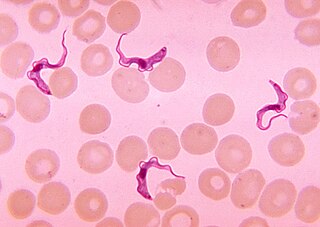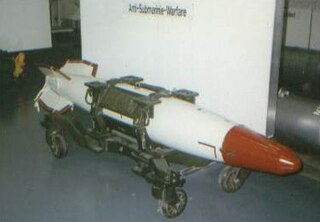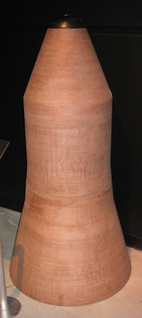
An endosymbiont or endobiont is any organism that lives within the body or cells of another organism in a mutualistic relationship with the host body or cell, often but not always to mutual benefit. The term endosymbiosis is from the Greek: ἔνδον endon "within", σύν syn "together" and βίωσις biosis "living"). Examples are nitrogen-fixing bacteria, which live in root nodules on legume roots, single-cell algae inside reef-building corals, and bacterial endosymbionts that provide essential nutrients to about 10–15% of insects.

African trypanosomiasis, also known as sleeping sickness, is an insect-borne parasitic disease of humans and other animals. It is caused by protozoa of the species Trypanosoma brucei. There are two types that infect humans, Trypanosoma brucei gambiense (TbG) and Trypanosoma brucei rhodesiense (TbR). TbG causes over 98% of reported cases. Both are usually transmitted by the bite of an infected tsetse fly and are most common in rural areas.

Tsetse, sometimes spelled tzetze and also known as tik-tik flies, are large biting flies that inhabit much of tropical Africa. Tsetse flies include all the species in the genus Glossina, which are placed in their own family, Glossinidae. The tsetse are obligate parasites that live by feeding on the blood of vertebrate animals. Tsetse have been extensively studied because of their role in transmitting disease. They have a prominent economic impact in sub-Saharan Africa as the biological vectors of trypanosomes, which cause human sleeping sickness and animal trypanosomiasis. Tsetse are multivoltine and long-lived, typically producing about four broods per year, and up to 31 broods over their lifespans.

Hippoboscoidea is a superfamily of the Calyptratae. The flies in this superfamily are blood-feeding obligate parasites of their hosts. Four families are often placed here:

Trypanosomiasis or trypanosomosis is the name of several diseases in vertebrates caused by parasitic protozoan trypanosomes of the genus Trypanosoma. In humans this includes African trypanosomiasis and Chagas disease. A number of other diseases occur in other animals.

The sterile insect technique (SIT) is a method of biological insect control, whereby overwhelming numbers of sterile insects are released into the wild. The released insects are preferably male, as this is more cost-effective and the females may in some situations cause damage by laying eggs in the crop, or, in the case of mosquitoes, taking blood from humans. The sterile males compete with wild males to mate with the females. Females that mate with a sterile male produce no offspring, thus reducing the next generation's population. Sterile insects are not self-replicating and, therefore, cannot become established in the environment. Repeated release of sterile males over low population densities can further reduce and in cases of isolation eliminate pest populations, although cost-effective control with dense target populations is subjected to population suppression prior to the release of the sterile males.

The B57 nuclear bomb was a tactical nuclear weapon developed by the United States during the Cold War.

Emjejane is a small farming town situated between Kaapmuiden and Komatipoort on a southern tributary of the Crocodile River in Mpumalanga, South Africa. The farms in the region produce sugarcane, subtropical fruit and vegetables. The stream is named after a dog belonging to S de Kock, chief surveyor of the Pretoria - Delagoa Bay railway line.

Trypanosoma brucei is a species of parasitic kinetoplastid belonging to the genus Trypanosoma. The parasite is the cause of a vector-borne disease of vertebrate animals, including humans, carried by genera of tsetse fly in sub-Saharan Africa. In humans T. brucei causes African trypanosomiasis, or sleeping sickness. In animals it causes animal trypanosomiasis, also called nagana in cattle and horses. T. brucei has traditionally been grouped into three subspecies: T. b. brucei, T. b. gambiense and T. b. rhodesiense. The first is a parasite of non-human vertebrates, while the latter two are the known parasites of humans. Only rarely can the T. b. brucei infect a human.

Animal trypanosomiasis, also known as nagana and nagana pest, or sleeping sickness, is a disease of vertebrates. The disease is caused by trypanosomes of several species in the genus Trypanosoma such as Trypanosoma brucei. Trypanosoma vivax causes nagana mainly in West Africa, although it has spread to South America. The trypanosomes infect the blood of the vertebrate host, causing fever, weakness, and lethargy, which lead to weight loss and anemia; in some animals the disease is fatal unless treated. The trypanosomes are transmitted by tsetse flies.
Wigglesworthia glossinidia is a species of gram-negative bacteria which was isolated from the gut of the tsetse fly. W. glossinidia is a bacterial endosymbiont of the tsetse fly. Because of this relationship, Wigglesworthia has lost a large part of its genome and has one of the smallest known genomes of any living organism, consisting of a single chromosome of 700,000 bp and a plasmid of 5,200. Together with Buchnera aphidicola, Wigglesworthia has been the subject of genetic research into the minimal genome necessary for any living organism. Wigglesworthia also synthesizes key B-complex vitamins which the tsetse fly does not get from its diet of blood. Without the vitamins Wigglesworthia produces, the tsetse fly has greatly reduced growth and reproduction. Since the tsetse fly is the primary vector of Trypanosoma brucei, the pathogen that causes African trypanosomiasis, it has been suggested that W. glossinidia may one day be used to help control the spread of this disease.
The Tsetse was a small American nuclear bomb developed in the 1950s that was used as the primary in several US thermonuclear bombs and as a small stand-alone weapon of its own.

The W59 was an American thermonuclear warhead used on some Minuteman I ICBM missiles from 1962-1969, and planned to be used on the cancelled GAM-87 Skybolt air-launched ballistic missile.
Ernest Edward Austen was an English entomologist specialising in Diptera and Hymenoptera. His collection of Amazon and Sierra Leone insects is in the Natural History Museum, London. He wrote Illustrations of British Blood-Sucking Flies (1906) illustrated by Amedeo John Engel Terzi

Folonzo is a town in the Niangoloko Department of Comoé Province in south-western Burkina Faso. The town has a population of 1,618.

Charles Francis Massy Swynnerton CMG was an English naturalist noted for his contributions to tsetse fly research.
No. 248 Squadron was a squadron of the Royal Air Force, active immediately after World War I, and again during World War II.
Procyclins also known as procyclic acidic repetitive proteins or PARP are proteins developed in the surface coating of Trypanosoma brucei parasites while in their tsetse fly vector. The cell surface of the bloodstream form features a dense coat of variable surface glycoproteins (VSGs) which is replaced by an equally dense coat of procyclins when the parasite differentiates into the procylic form in the tsetse fly midgut.

German submarine U-976 was a Type VIIC U-boat of Nazi Germany's Kriegsmarine during World War II.


















